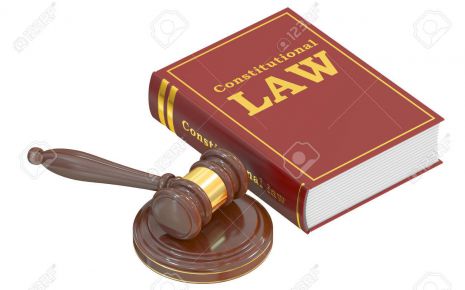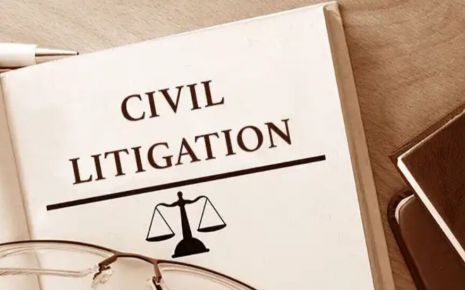Case Comment on Jayamma and Anr Vs State of Karnataka
"Why should I then be false, since it is true that I must die here and live
hence by truth"- Shakespeare
Do you understand the significance of truth in one's life while one is dying? We
come across the Latin maxim Nemo moriturus praesumitur mentire, which simply
translates as "A man would not face his creator with a lie in his mouth," or "A
person would not lie on his deathbed". A dying declaration is a piece of
evidence that revolves around this maxim and is admissible in the court of law
without being cross-examined, as it constitutes the final words of a person who
is about to die.
It's crucial to know the probability of truth and how prudent
it is when a court of law is bound to make a justified decision in favour of the
victim or person who is accused of a crime while taking into consideration the
very aspects of the law. The law of evidence is based on a cardinal principle
which suggests that facts of the case must always be supported and proved by
direct evidence but not in the case of Dying declaration it is backed by an
exception that makes it admissible.
In this present case, the Supreme court
examined the issue of whether a dying declaration can act as sole evidence to
convict the accused of a criminal offence. The definition of a dying declaration
is embodied in the evidence Act it is "a statement of facts narrated by the
victim before death, containing all the circumstances and details of the
incident". A dying declaration can only be admissible in court if the individual
making the statement is in a fit mental state, which must be certified by a
doctor, and the statement must not be influenced in any way.
The present case had undergone several proceedings in trial courts and high
court and the final verdict of this case was reversed by the supreme court
providing a reasonable explanation to their decision, the hon'ble supreme court
delivered the judgment on May 7, 2021. The case dealt with the evidence Act
1872, IPC, and CrPC with the following section 302,34,504,307, and 114 of IPC
(Indian penal code), section 32 of Evidence Act,1872, and section 313 of CrPC
(Code of criminal procedure).
Facts:
Both the appellant and the respondent, in this case, had been related to one
another for a long time; the appellant was Jayamma, the spouse of Reddinaika,
and the deceased, who was the respondent, in this case, was Jayamma, the spouse
of Ramanaika; however, the parties were not on speaking terms due to animosity
between their families. On the 10th of September,1998, a verbal confrontation
erupted between the two families, during which Thippeswamynaika, the deceased
respondent's son, violently attacked and wounded Reddinaika.
Following the
incident, the appellant ended up going to the Respondent's house to accost him
about the violent attack on Reddinaika on September 21, 1998, and sought
Rs.4000/- for the medical expenses paid while the appellant's husband Reddinaik's treatment. once again Both parties indulged in a verbal
confrontation, which led the appellant to pour kerosene on Jayamma and lit her
on fire, as the respondent alleged.
Hearing Jayamma's cries, one of her sons,
Ravi Kumar, and daughter-in-law Sarojabai, Spouse of Thippeswamynaika, ran to
the scene and put out the fire with a fire extinguisher. While this was going
on, the appellant vanished from the scene of the incident, and Jayammas other
son drove her to Thalak's primary health care center, where she was treated by
Dr.A Thippeswamy.
The medical report was subsequently forwarded to the Thalak
police station by the doctor. S.H. O.V Mallikarjunnapa recorded Jayamma's
statement in the presence of Dr.A Thippeswamy. Jayamma was then shifted to a
Government Hospital named Chitradurga as her medical condition was deteriorating
day by day, soon after on 23rd September 1998 at 5.30 am Jayamma lost her life.
The police subsequently filed a motion with the court, requesting that the
offence be registered
under section 302 read with section 32 of the IPC rather than section 307 read
with section 34. The post-mortem study revealed that Jayamma died as a
consequence of the unbearable pain she was experiencing as a result of her burn
wounds. During the investigation, the appellants were arrested and eventually
released on anticipatory bail.
The case was dealt by the trial court and it took note of the fact that the sole
material of evidence on record was the dying declaration which is the statement
of the deceased. The court acquitted the appellant as the respondent failed to
produce any solidary evidence for the conviction, all the witnesses turned
hostile and only the police officer and Doctor supported the respondent's
case.
The respondent then immediately filed an appeal with the Hon'ble High Court,
which resulted in the case being reversed and delivered in his favour. The dying
declaration was judged to be a piece of sufficient evidence to convict the
accused by the Hon'ble High Court, the appellant then subsequently filed a
criminal appeal against the High court's verdict before the Hon'ble Supreme
court.
Issues:
- Whether the Hon'ble High Court correct in reversing the trial court's conclusions in the exercise of its powers under section 378 of the CrPC?
- Whether the prosecution successfully proved its case beyond a reasonable doubt?
- Whether the victim's statement be utilized as sole evidence for the accused's conviction if it was given in a fit mental state by the deceased before the presiding officer?
Contentions of the parties:
The appellant's learned counsels believed that the trial court's conclusion was
fair and practical, but that the High Court's verdict on the other hand was
incorrect and erroneous. It argued that the High Court failed to execute its
duties under section 378 of the CrPc by failing to thoroughly examine and assess
all evidence. the learned counsels relied heavily upon the case of Paparambaka
Rosamma and Ors Vs. The State of A.P.,1999, contended that a medical certificate
stating the victim's medical fitness as to her mental state and condition at the
time of giving the statement should've been taken into account and that the High
court should not have relied on such declarations since there is no proof of the
victim's mental state and condition at the time of giving her statements to the
police officials.
Therefore, the learned counsel for the appellants brought the
court's attention to the fact that the High court omitted to consider some of
the most important details of the case, due to which the High court was unable
to give a reasoned conviction. counsels for the respondent were in favour of the
High court's verdict they backed their arguments by citing the case of Vijay Pal
vs. Delhi State Government, 2015. Wherein it was held that even in situations
where the victim's body is completely burned, the dying declaration could
nonetheless still be used to prove the guilt of the accused.
Supreme Court's Judgement:
After a detailed examination and relying on the case's factual matrix, the hon'ble supreme court observed that since Jayamma was in great agony and
disturbed physical and mental condition it was unlikely that she could give an
accurate report of the incident, and even if she was physically and mentally
stable at that moment, she wasn't literate enough to explain the entire
situation with such precision. The court also pointed out that Jayamma was alive
for almost 30 hours but the authorities did not inform the magistrate
immediately to record the statements and the fact that the doctor had complained
about the said incident to the police and none of the family members did make
the whole scenario more suspicious.
The Supreme court noted that the high court had relied entirely on the dying
declaration of the deceased and corroborative statements from a doctor and a
police officer who were the only people present at the time when the statements
were made. The court found out that the police officer tampered with the
deceased's dying declaration since some of the words were inserted in the
original document by a different link.
The present case raised several doubts related to dying declaration, there was a
doubt including whether Jayamma was in a fit mental and physical condition to
provide an accurate account of the incident, the number of burned wounds on her
body caused her great agony which made it difficult for her to give a correct
statement.
The additional bench found it quite difficult to uphold the
conviction based on a dying declaration, the court also set aside the conviction
since it believed the high court's power under section 378 of CrPC should not
have been easily invoked in this case, and the court should have restricted
itself in interfering when the trial court had examined all of the material
evidence in the case and has possibly formed an accurate viewpoint relying on
the factual matrix. As a result, the Hon'ble Supreme Court reversed the High
court's Verdict by setting aside the conviction of the appellant.
Conclusion and Analysis:
There has been thought as to how suspicious and malafide dying declarations
should be dealt with to match the principle of justice. In cases where there are
multiple divergences of evidence or dying declarations, the Courts must not
invariably prefer the statement that is incriminatory and rejects the statement
that does not implicate the accused. It is upon the court who shall decide on
the facts of each case. If the implicating dying declaration demonstrates the
situation's trustworthiness and the court has reasons to believe, particularly
concerning the deceased status and capacity at the time of making the
declaration, the court must take action.
Our criminal jurisprudence puts great emphasis on the notion that every
individual is presumed to be innocent in the eyes of law until and unless his
guilt is proved in the court in a criminal proceeding. Our society, on the other
hand, does not operate in this manner; instead, it declares an accused guilty
before the court renders its final judgement, and then torments and mentally
tortures the accused and their family until they eventually succumb.
This case is a classic example of how ignorance of a simple fact in an
investigation can turn the whole case upside down, it affects the lives of
innocent parties who are not at all guilty of any offence and are still
convicted for the offence they haven't done. Our constitution provides for the
judiciary to be independent to deliver fair justice to the people of its
country. If an innocent party is convicted in 'error' then our criminal
jurisprudence should be so strong that the appeal system should administer to
reverse the conviction in a speedy process to reduce the harm that was caused to
the victim and his or her family and friends and reinstate the legitimacy of the
criminal justice system.
Reference:
- https://main.sci.gov.in/supremecourt/2009/38202/38202_2009_31_1503_28001_Judgement_07-May-2021.pdf
- https://mylegalaid.in/?page=brief_details&id=156
- https://primelegal.in/2021/05/17/dying-declaration-cannot-be-admitted-as-sole-evidence-when-not-supported-with-cogent-and-plausible-explanation-supreme-court/
Award Winning Article Is Written By: Ms.Yvette Borges

Authentication No: JU217385180655-22-0622
Law Article in India
Legal Question & Answers
Lawyers in India - Search By City
LawArticles
How To File For Mutual Divorce In Delhi

How To File For Mutual Divorce In Delhi Mutual Consent Divorce is the Simplest Way to Obtain a D...
Increased Age For Girls Marriage

It is hoped that the Prohibition of Child Marriage (Amendment) Bill, 2021, which intends to inc...
Facade of Social Media

One may very easily get absorbed in the lives of others as one scrolls through a Facebook news ...
Section 482 CrPc - Quashing Of FIR: Guid...

The Inherent power under Section 482 in The Code Of Criminal Procedure, 1973 (37th Chapter of t...
The Uniform Civil Code (UCC) in India: A...

The Uniform Civil Code (UCC) is a concept that proposes the unification of personal laws across...
Role Of Artificial Intelligence In Legal...

Artificial intelligence (AI) is revolutionizing various sectors of the economy, and the legal i...








Please Drop Your Comments